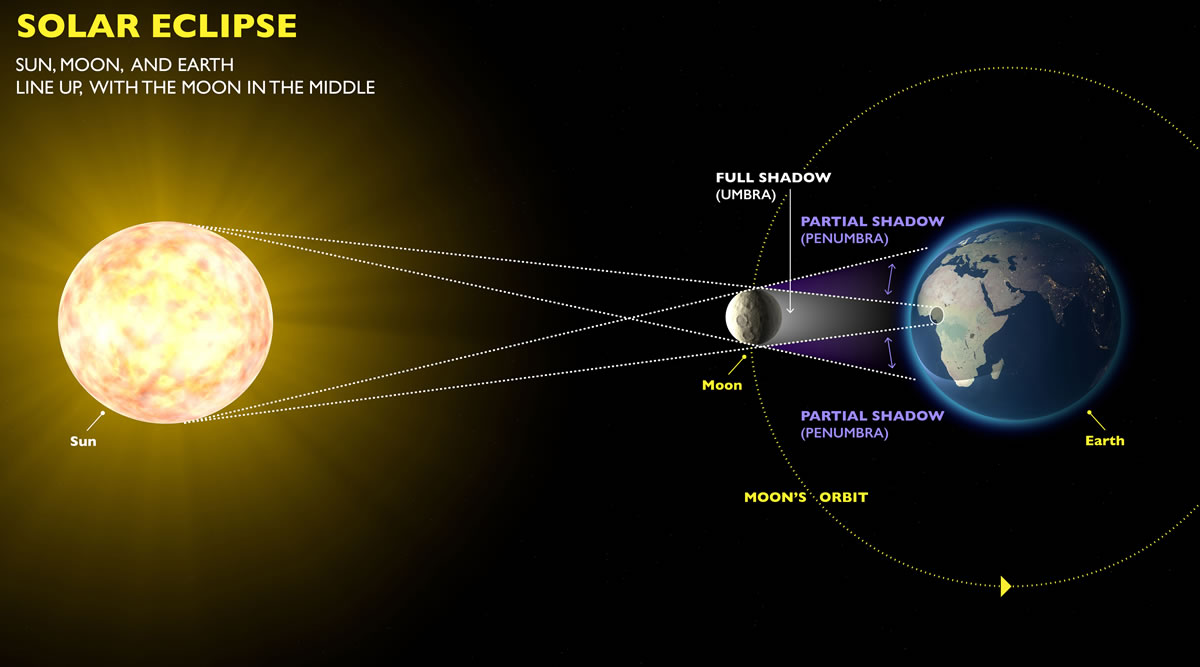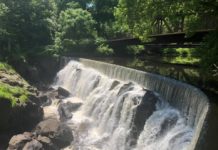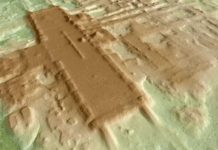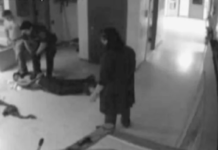Niuam (Comanche) fan with sun and Morning Star designs (detail), ca. 1880. Oklahoma. 2/1617
Published August 20, 2017
Editor’s Note: This article was first published on the Smithsonian National Museum of American Indian’s website. Used with permission. All rights reserved.
/ CURRENTS / 20 AUG 2017
WASHINGTON – The National Museum of American Indian has received numerous inquiries concerning the upcoming eclipse. Part of the museum’s mission is to provide a forum for Native people’s voices, so we went to the Internet to ask, “Does your tribe have any beliefs or protocols concerning the eclipse?” Here are some of the replies, with the correspondent’s Native affiliation (and where he or she is living now).

Laguna–Acoma Pueblo (New Mexico): “My Chacoan and Mesa Verde ancestors were astronomers. They marked Halley’s Comet, we watched the sun, and we predicted eclipses. The Sun Dagger at Chaco Canyon is a prime example of the science of my Puebloan ancestors. I asked my elders recently of any taboos with eclipses. I was told that they are a time of transformation and not to fear them. Those in our tribe who feel fear have done something wrong. They told me to pray with cornmeal, respect the silence, and accept the transformation coming.”
Cherokee (Oklahoma): “Cherokee say it is a giant frog in the sky trying to eat the sun. Everybody is supposed to go outside and make a big noise with drums, whistles, and voices to scare the frog away.”
Shawnee (Kansas): “Our prophet Tenskwatawa, predicted
a solar eclipse leading up to the War of 1812. He predicted this to William Henry Harrison, who dared Tenskwatawa to predict the future. He did, and tribes came from all over to hear our Prophet speak.”
Shoshone-Bannock (Idaho): “My gramma would close all her windows. She says that’s when bad things happen to bad people. After that, we would drink water that she prayed for. That’s my young recollection of the eclipse, both lunar and solar.”

Hopi (Arizona): “I am Hopi Sun Clan! We pray to our Dawa every morning. During the last eclipse, our nieces and nephews were given their sacred Hopi names—Red Beautiful Sun, New Colorful Sun, and Little Sunboy! It’s very significant to us, a time for ceremony.”
Kiowa (Oklahoma): “The sun and the moon played an important part in our yearly cycle. I seem to recall hearing where a full eclipse happened. All of a sudden some got scared and just prayed.”
Kumiai and Yaqui (Maryland): “I was raised outside my traditional community. This is what I was taught by my mother and aunties in Mexico: For pregnant women especially, during an eclipse they are to wear a red sash with a small steel pin or keys and not to go outside at all.”
Taos Pueblo (New Mexico): “We are told to stay inside and keep babies away from the windows, to be mindful. We have to wear something sharp.”
Nakoda (Alberta, Canada): “Our elders have said that any meteor and lunar activity are omens signifying events that will come to pass. Rings around the sun and moon may indicate significant weather change. Lunar and sun eclipses have deeper representations. This activity represents some natural occurrence to happen on earth.”
Ho-Chunk (Wisconsin): “Was told to respect both sun and moon eclipses. Time of transformation.“
Crow (Montana): “We believe it’s a new beginning. The sun dies and is rejuvenated.”
Pawnee (Oklahoma): “When I was younger I asked an elder about what an eclipse meant to us. He said he didn’t know much, but he heard the old people talking about how it was a troubling time when one happened. They said it meant a great leader was going to pass on.”
The Institute for Diné Culture, Philosophy and Government, in Rock Point, Arizona, on the Navajo Nation, received so many inquiries that the staff prepared a detailed reply:
Our Diné people have a completely different definition and perspective on this sacred natural phenomenon. The belief is that the Jóhonaa’éí (Sun) is the male and the Tł‘éhonaa’éí (Moon) is the female. The Sun is the most powerful deity amongst all creation, here on earth and in the universe. The Sun is the epicenter of all creation. Nothing will live or function without the Sun. The Sun controls and regulates the universe, whereas the moon controls and regulates the earth.
David Chethlahe Paladin (1926-1984, Diné [Navajo], Sun Spirits, 1971. Albuquerque, New Mexico. 25/8436The Sun is vested with the concept of and in control of death (anoonééł), and the Moon is vested with and in control of birthing (oochííł). When a solar or lunar eclipse occurs, it is believed that a death occurs. That is the reason why an eclipse is termed daaztsą́, either Jóhonaa’éí daaztsą́ (solar eclipse) or Tł’éhonaa’éí daaztsą́ (lunar eclipse). A death is a very sacred occurrence. There are certain necessary protocols, but most important is the strict and comprehensive reverence in observing the occurrence of death (yéego dílzin dóó hodílzin). During a solar or lunar eclipse, strict and comprehensive acts of reverence must be carried out.
In addition to the concept of death during an eclipse, it is also believed that during an eclipse, the Sun and the Moon are mating. After the passing of the eclipse, when the sun or moon becomes fully bright once again, it is believed that a birthing has just taken place. It is believed that the mating is to give birth to, or renew, the universe and all creation. During this birthing/renewal process, the universe and all creation are reborn, realigned, and there is growth and development amongst all of creation as well.
Due to the very sacredness of death and birth, the reverence required to be displayed during an eclipse is very strict and comprehensive (ts’ídá yéego hodílzin).There is only one way to be reverent during an eclipse. No shortcuts exist. We cannot simply smudge ashes or corn pollen upon ourselves and exit our homes and carry on as if it is just another day. The following acts of reverence must be carried out during an eclipse: We must stay inside, preferably in our home; we cannot eat or drink anything, cannot be asleep, cannot brush or comb our hair or wash ourself, cannot be in an intimate act with our spouse or anyone of the opposite sex, cannot needlessly move around, are required to remain calm and still, cannot look outside, cannot look at the sun while the eclipse is occurring—yes, it also means the shadow of the sun, through a pinhole or other apparatuses; and we cannot be using the restroom.
During the eclipse, we must be in full prayer and reverence. Prayers must be focused on the concept of the Sun or Moon going through an ending, and we are to pray about the ending of bad or evil, or the ending of phases of life. In addition, our prayers must be focused on the birth and renewal that will arrive when the eclipse ends. Moreover, prayers must be about a better future. Most of the time, we pray for and about ourselves and loved ones. It is advocated that prayers during an eclipse must mostly be about this creation: the ending, renewal, and the future of this creation and the divine presence. If we know the songs for use during eclipses, those songs can be sung at that time.
Moreover, during the eclipse, we must always look down at the ground, cannot be looking up or outside. The animals, the insects, the birds will not be active during the eclipse. The birds will not fly; the insects will hibernate; horses and dogs will be calm and look down at the ground.
When the eclipse ends, we will end our prayer and say hózhǫ́ náhásdlį́į́ four times. At that time, we must take our corn pollen (tádídíín) out and use it as an offering to acknowledge our prayer and to acknowledge the sacred phenomenon. The corn pollen will be the first meal taken after the eclipse, just as corn pollen is the first food eaten in a new period of life. We will feel the renewal of life, the rejuvenation of life, the feeling of going on, and a positive outlook of the future.
It is tremendously amazing how our people knew when the eclipses were going to happen through their prayers, songs, and belief systems without technology. Today we have to rely on the media to inform us when these eclipses are going to take place. Our prayers and songs are very powerful.
Our traditional Diné teachings instruct us that if a person does not observe the eclipse in accordance with the cultural protocols that have been outlined here, the nonobserver will certainly develop eye problems. Unexplained sun burns or rashes will develop, digestive problems and unexplained migraine headaches will develop. If a woman is pregnant and follows the proper required protocols, there should not be any problems. However, if the protocols are not followed, prenatal problems may develop, and when the child is born, the child will certainly develop digestive and skin problems. There are ceremonies to put people back in harmony. It requires a two-day ceremony, however, with an overnight portion and sand paintings.
The Diné Institute is merely sharing our sacred and still relevant cultural teachings. An individual always has a choice to observe or not to observe the eclipse. We hope that our brief synopsis has clarified, reaffirmed, or educated our readers about the upcoming eclipse. On behalf of all of our resident Diné Institute Hataałiis and staff, we thank you for your understanding and encourage all of you to keep our cultural protocols alive and sacred by observing the upcoming eclipse in accordance with these requirements. We thank all the school districts and other agencies who concluded that it would be in the best interest of our children and our sacred cultural belief systems to close schools and offices on the day of the eclipse. May the Holy People be with you and bless you.
Reprinted with permission courtesy of the Institute for Diné Culture, Philosophy and Government

After the museum first published this post, the Comcáac Project shared the beliefs of Comcáac/Seri elders of Sonora, Mexico:
They do a ritual: Older people in the family sit on the floor in meditation position and make noise with drums to call or communicate with the sun, and talk prayers so the sun can feel it and return brightly. . . . For the ancestors an eclipse of the sun is zaah quij cooxi, which means “death of the sun,” and when the shine returns, it is considered as a new stage, fresh new life for the sun.
Pregnant women cannot look at the sun or be in the sunlight. They use red paint (xpaahjö) to paint crosses and red spots on various parts of the body except the face. Mothers hide babies less than a year old, but they do not use paint for them. Girls from one year to until puberty they paint with dots using white paint (hantixp), because the ancestors say that if they do not do that during the eclipse, when the girls are older they might not have children or never marry. . . . To older girls who already have puberty nothing happens, because their blood is active and there is strength to protect them.
—Dennis W. Zotigh
Dennis W. Zotigh (Kiowa/San Juan Pueblo/Santee Dakota Indian) is a member of the Kiowa Gourd Clan and San Juan Pueblo Winter Clan and a descendant of Sitting Bear and No Retreat, both principal war chiefs of the Kiowas. Dennis works as a writer and cultural specialist at the Smithsonian National Museum of the American Indian in Washington, D.C.










